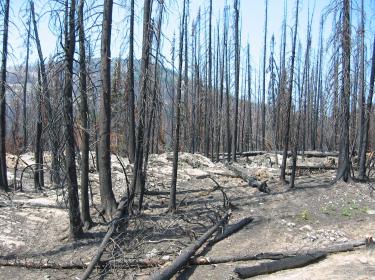Benefits of Thinning
Now that you’ve learned more about thinning, you may wonder: why do I need to thin? Won’t Mother Nature manage this process on her own? The answer is yes and no.
A stand of trees that starts out with 4,000 to 5,000 seedlings on a single acre may have fewer than 100 trees that are healthy and mature at harvest time. But that natural thinning, if unaided, can take 150 to 200 years—and it doesn’t always happen.
The fact is that overdense forests are at greater risk for severe wildfires, disease and pest infestations, so they sometimes won’t make it to maturity—or they won’t be as healthy as they could be—if left to thin themselves.
Well-managed thinning gives the natural process an extra boost. It keeps your forest healthy and protects it from the risks of fire, pests and disease. And it offers a few other benefits too:
- Encouraging rapid growth and reducing the time your trees need to reach a marketable size, if growing wood products is one of your goals.
- Improving wildlife habitat by allowing sunlight to reach the forest floor, where food plants for deer and other animals grow.
- Improving park-like views on your property.
- Enabling you to benefit from undesirable or unhealthy trees right away, by either selling the unwanted trees once they’re cut or by using them for firewood.
If you’re ready to benefit from thinning your woods, you’ll need to learn the right way to do it. Learning a few key dos and don’ts will help keep you and your forest safe.
How can I get more tips?
It’s simple! Enter your email below.

